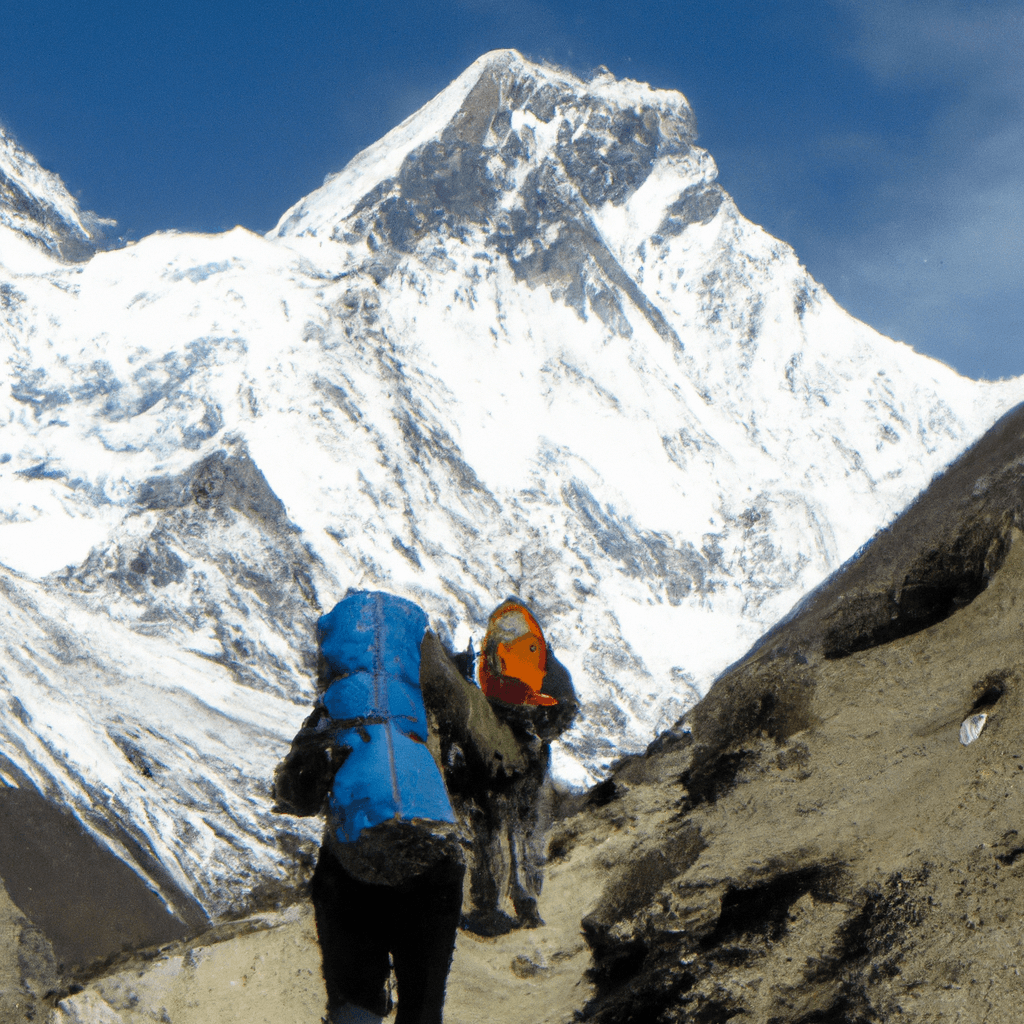

Nepal has banned solo trekking in Nepal from April 1st 2023
Nepal Tourism Board, Trekking Agencies’ Association of Nepal have decided that from April 1st 2023 all trekkers visiting Nepal must have a mandatory trekking guide with them. Free Independent Trekker cards (permits) will no longer be given out. All trekkers must now pay a new increased fee for regular Trekker Information Management Cards. Today their release their official statement.
It’s a decision that has gone back and forth for a decade. It’s also a decision that will have huge repercussions on Nepal’s tourism industry the likes of which the country will be feeling for years. Nepal has now lost its title of the world’s greatest independent trekking country and also its title as a land of adventure to one of land of package treks. Hotels, restaurants, local businesses will all see a loss of independent tourists, backpackers, budget travelers, and more as large tour companies seize on a prize they’ve wanted for years. Head of Nepal Tourism Board Dhananjaya Regmi has stated that the minister for tourism supports this ban.
The announcement was greeted with scorn and disappointment with international trekkers, along with many local Nepali businesses. The reasons for this move to ban independent trekking in Nepal are clear to all – a clear move to make money for “well connected trekking agencies” and to tighten the noose on foreign tourists wallets (Nepali trekkers are not included). They’ve wrapped all of this up under the guise of improving safety – which has been disproved long before this announcement.
What are the new rules for trekking in Nepal?
- Starting April 1st 2023 all foreign trekkers in Nepal must be accompanied by a Nepali guide who is licensed and works for a trekking company.
- FIT Cards are being replaced with new TIMS cards costing $20 USD (an increase of $10).
To be clear. All non-Nepali single people, couples, and groups will need a mandatory trekking guide for all official treks in Nepal. Freelance guides are no longer able to take trekkers. All guides must work for a TAAN licensed trekking company.

“The decision to enforce mandatory guide for trekkers falls under Nepal Tourism Board’s jurisdiction,” said Rajendra Kumar KC, spokesperson for the Tourism Ministry. “The issue was under discussion for quite a long time to ensure the safety of the trekkers.”
“The ministry has no objection to it,” KC added. (Kathmandu Post).
Why has Nepal banned independent trekking?
Officially the reason is to improve trekkers safety. However the numbers of missing trekkers or trekkers who have died in Nepal that are being quoted by Nepal Tourism Board are simply not correct. They are quoting 10-15 every year.

The reality is that in 2016 there were 5 missing trekkers. In 2017 there were also 5 missing trekkers. In 2018 the official number was 3 with 7 unconfirmed. 2020-2001 trekking was closed due to the pandemic. In 2022 there were again 5 missing trekkers. It should also be noted that several of these missing trekkers went missing with guides (missingtrekker.com). Likewise, deaths of trekkers are about equal between solo trekkers and trekkers with guides. Compare that to India where 32 trekkers went missing last year. In Switzerland a whopping great 122 trekkers got lost in the mountains in 2021 and 1,525 needed to be rescued.
Nepal is not exactly leading the list of missing trekkers around the world.
A flawed reason for banning independent trekking in Nepal
You may have noticed aside from the dubious numbers from the spokes people making this ruling is that Nepali trekkers are not included in the proposed new “safety” protocol of having mandatory guides. Yes, a solo Nepali person can trek anywhere without a guide. And yes, Nepali trekkers are included in the numbers above. It seems those making up these rules have no care for the safety of their own citizens who also go missing and are included in the above numbers.
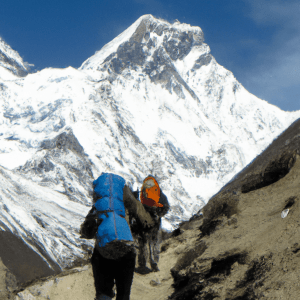
It’s also worth pointing out that there are a huge amount of people within NTB and TAAN who own trekking agencies. It is clearly in their financial interest to try and restrict trekkers and push them into their exclusive package treks. They are after all the people making up the rules – conflict of interest? Meanwhile, there is no improvement in trekking guides training in a country where just last year in November a registered trekking guide deserted 11 trekkers in the snow whereupon two died. A good lesson for those reading to hire a good trekking guide from a trusted recommendation.
It’s also worth pointing out the utter failure of TAAN and NTB in making the current Trekker Information Management Cards worth while. How bad is the system that stated by TAAN to help ensure the safety of trekkers in Nepal? Well, currently none of the checkpoints are open. In fact they’ve all been closed since 2020. And, to add insult to injury NTB still insist trekkers buy TIMS cards for the Solukhumbu (Everest) region despite the local regional administration banning TIMS cards since 2018 because they were so useless!
The reason for the ban to put it honestly: corruption and greed
How will this new rule on making trekking guides mandatory in Nepal work?
This is the icing on the cake. There was no plan. All TIMS cards checkpoints are closed with a rumor that they will be opened in mid April. NTB seem to be under the impression that trekking agencies will have to enforce the rule and be responsible for all trekkers. It sounds a lot like mob rule – similar to the Maoist beatings of tourists in the mid 2000s who refused to pay on the spot fines for going through their land. If this occurs, then Nepal will no longer be in the top 100 of any trekking destination, let alone the top 10 which it is about to drop out of. The irony is that NTB is enacting this mandatory guide rule from an old rule from the mid 2000s due to the danger from Maoist groups at the time. Something that is no longer a problem. However, something similar might start up again, in terms of groups harassing trekkers if they are seen without a guide.
As of April 1st TAAN announced that trekking companies must now apply for TIMS cards via a new E-TIMS system at https://tims.ntb.gov.np/.
The systems has been condemned by trekking agents as being difficult to fill out. Guides needing to print out the completed forms. Online payments methods only being accepted. And, delays in the issuing of the TIMS cards.
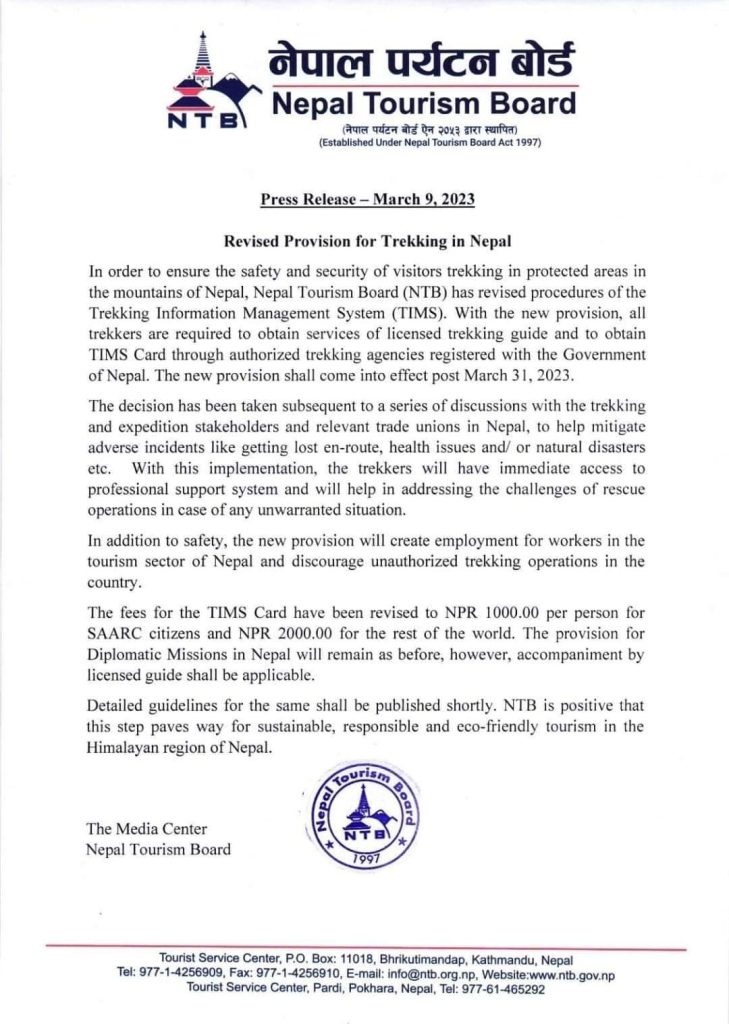
Even if the TIMS card checkpoints open up again, nobody knows if a solo trekker on April 1st coming back from a trek not knowing this rule will be fined or arrested? Similarly what happens if independent trekkers head out and are stopped randomly halfway through their trek? Are they sent back? Fined, or forced to have a mandatory trekking guide flown in by helicopter (inside joke on the helicopter scam)? Again, it’s all been left up in the air with a promise of guidelines will be introduced shortly – a little late for people who already booked flights and their budgets this year.
In one grasp of greed Nepal has shattered its trophy as the world’s greatest independent trekking country.
The worst that can happen is nothing. Which will be typical of NTB and TAAN. No official improvements in guide training or proper guidelines just like the banning of TIMS card in Solukhumbu. This leads the way to local groups or guides harassing solo trekkers when trekking without a guide. We are all basically waiting for official guidelines. Today was the first announcement in a week of waiting.
Official guideline FAQs from Nepal Tourism Board
- What if I take permits before April 1st ? The new rule will come into effect from April 1st, 2023. The trekkers who get the permits and start the trek before April 1st will not require a guide. But they’ll need to have entered the trekking area before April 1st.
- What if I want to do ACT or similar treks in bikes? All the treks need to comply with the new rule. You can contact a trekking agency in Nepal for the guide to accompany you in bikes. Trekking Agencies in Nepal
- What if I an experienced trekker and associated to a trekking/mountaineering association in home country? The rule is applicable for all the foreign national trekkers.
- What about the areas such as Chame, Muktinath etc that require TIMS card just because they lie inside a National Park or conservation area?
Yes, all the areas need a guide and permits taken from an agency. - Is this rule also applicable when I hike around Kathmandu? Or to Sarangkot? Where all are these rules applicable? The Revised Provision for Trekking in Nepal must be followed only while trekking to areas where TIMS is applicable. It is applicable in all national park areas in the mountains. It is not applicable in Kathmandu Valley outskirts, Pokhara outskirts, and hiking areas in and around major cities.
- Do I have to go via a trekking agency? Or is it OK so long as I have a guide? It is mandatory to hire a licensed trekking guide through a government-registered trekking agency.
- How can I find that out if the trekking agency is legit? Trekking guide must be hired through government-registered trekking agency. You can verify information on the trekking agency from Department of Tourism and Trekking Agencies Association of Nepal. (all trekking agencies in the guidebook Trekking in Nepal and the Nepal Guidebook are legitimate government-registered trekking agencies)
- What are the consequences if I do not follow this rule? Not following the rule is a punishable offense.
- I am a trail runner and fast packer, no agency specifically provided guides that can keep up with me. What should I do? It is applicable to all. You must ascertain that the trekking agency can provide guide who matches your specific requirement.
- I am an expat living in Nepal. Does this rule also apply to me? Yes, the rule is applicable to Diplomats as well as Expats
- I am Nepali. Does this rule apply to me? The rule is not applicable to Nepali citizens.
The Following rules were released by TAAN to trekking agents on the 1st of April 2023.
- Trekkers without a guide or TIMS will be fined 12,000 RPS
- Trekking companies found issuing TIMS and no guide will be issued a fine of 10,000 RPS
- Checkpoint staff get a 20% incentive of the total fine when they catch a trekker
- Mountain bikers need a TIMS and Guide
- Restricted areas do not need a TIMS (but you need one to reach it)
- Helicopter tours do not need a TIMS or guide unless it’s a one way flight
- Diplomats and their families only have to pay 500 RPS for a TIMS
- All foreigners travelling alone by vehicle need a TIMS and guide
- TIMS and a guide are not needed if the area is easily accessible by motor vehicle
Will this ban be changed?
There are two scenarios that will play out here. Despite the ruling, TAAN will fail to implement their new system and checkpoints properly. The issue will boil down to if trekkers can get travel insurance for what will become “unofficial treks” aka any trek with no guide. However, the likelihood of this rule never being enforced is still high – at the moment. Sadly, based on my experience in Nepal, I can tell you now that we won’t know more until the end of April when reports come in if checks are being done or not and by whom.

The next way this can be changed is how it has happened in the past. Nepali hotel associations and restaurants along with small businesses object to this as their businesses lose out to package tour operators. Previously they have put up a good fight to stop bans on solo trekking from occurring. However, this time around after the pandemic and cost of living increases it seems desperation has taken hold and many have signed off on the ban. I would estimate it won’t be until 2025 that they see a decrease in independent visitors to their businesses.
Finally, tourists themselves will have a say – by simply not visiting Nepal and choosing another mountainous country that does not enforce mandatory guides (vast majority of the world). The first batch of independent travelers to do this will be backpackers, followed by experienced solo trekkers, repeat solo trekker tourists, followed by people who simply don’t want the restrictions of having a guide with them.
Are there any treks that an independent trekker can do without a guide in Nepal?
I’ve always advocated tourists to hire a guide for your first trek in Nepal. Even experienced trekkers. However, I also support independent trekking for those with experience or for those with more than one trek completed – it’s one of the things that made Nepal so great. Trekking alone in the mountains with nature all around you. First hand experiences of adventure.
You can still trek in Nepal without a guide in areas where you “don’t need a TIMS card”. Examples of this include
As you may notice these are all low altitude treks that don’t have TIMS checkpoints or are outside National Parks. Khopra Danda is another one however it depends how you reach it.
All of the above are available in my book Trekking in Nepal.
Here’s something for high altitude trekkers too. The Solukhumbu (Everest) region does not accept TIMS cards and have stated that guides are not mandatory in the region. Group trekkers with guides need to pay a local regional permit, while independent (solo) trekkers can trek so long as they buy a TREK card (USD $20). This may well change but as of now these treks also don’t require mandatory guides.
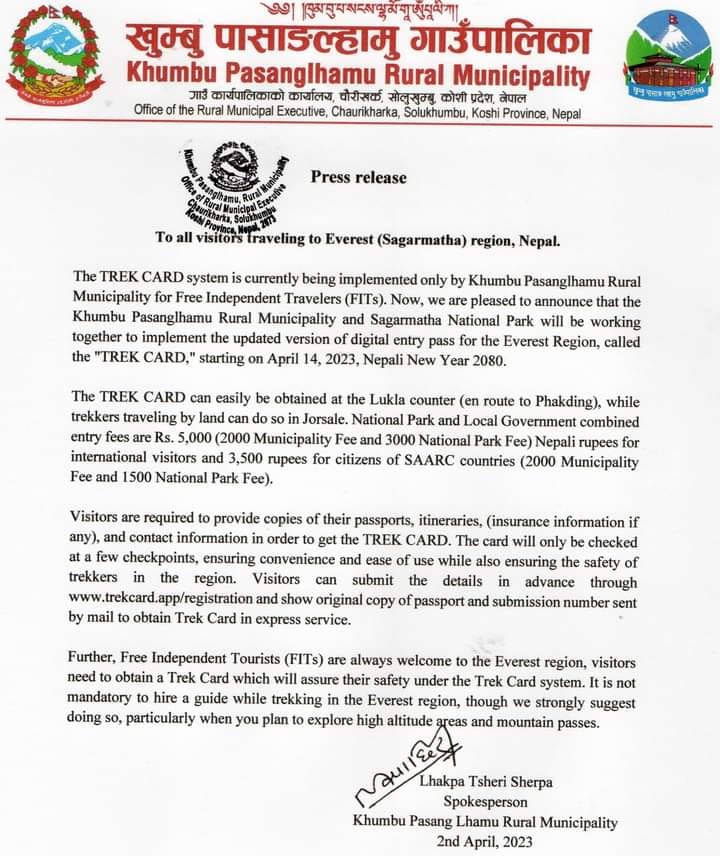
My guess is the local administration of Solukhumbu will enforce the ban at some stage, but for now, there is an official letter stating you can trek alone on those treks. However, once again, my own advice is for all first time trekkers to take a guide.
All of the above are available in my book Trekking in Nepal.
Is this the end of trekking in Nepal?
No. You can still trek, but you’ll need a guide, maybe. Nepal is a country where many rules are imposed on people, but the vast majority of rules are never implemented. There was a great law that banned car honking in Kathmandu in 2017 – it’s still a law, but nobody obeys it. Cars were banned in Thamel during 2018 – today cars and motorcycles drive with reckless abandon throughout Thamel.

It’s the uncertainty with no guidelines and most importantly no improvements that many people don’t like. The old saying of “carry on” as normal applies to this “ban” on independent trekking. The dreaded, wait and see in April what happens is being touted. It’s all very much up in the air, unfortunately. However one thing is certain, ask a trekking agent or NTB and they will categorically tell you that a guide is now mandatory only for “foreigners”- why? Because they make money from it. Ask them what actual safety precautions have been created or what improvements to trekking guide training has been introduced and you’ll get a blank stare and a perhaps, if you are lucky a head wobble.
The news of Nepal’s ban on independent trekking is a different story than most. Indeed, in one grasp of greed Nepal has shattered it’s trophy as the world’s greatest independent trekking country. Gone also is the moniker of Nepal being a country filled with adventure, replaced with the moniker of a country of package tours and mandatory watch dogs. Make of it what you will. We carry on until such time as someone makes proper guidelines with clear definitions, regulations, and implementation.
Get my Trekking in Nepal Guidebook & discover more than anyone else!
Looking for more insider tips and information like this? Get the most up-to-date, popular and dedicated guidebook to Trekking in Nepal in the world. Covering 28 full treks over 400 pages. The only trekking guidebook in the world with trekking links showing you how to link treks together! Available as an instant download or worldwide shipping for the paperback edition!
Take a look below and you’ll find out why this beats all other guidebooks!
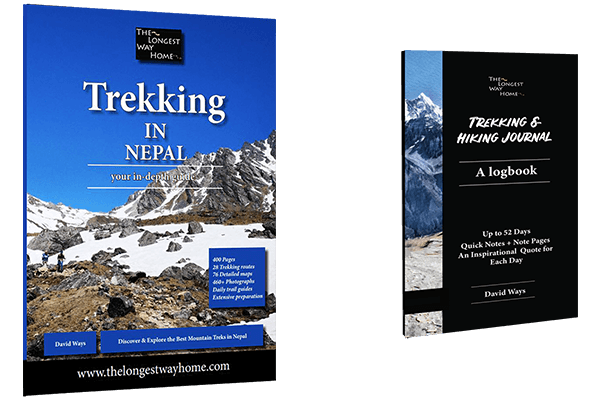
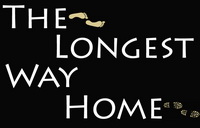
Terrible news. Thank you for letting us now about it. We were planning to spend a month in Nepal this October. Thankfully not bought tickets yet. We were going to do EBC with a guide. Then another two weeks on the APC on our own.
It’s added just too much to the budget so we’ll head to Georgia instead.
Many people are thinking the same thing.
Of all the articles I read, this tells the most. Well done.
The fact there is no guide training, Nepali people don’t need to take a guide, and they’ve increased the fees is just a blatantly bad decision. Such a shame.
Thank you. Yes, there have been no improvement to trekking guides training. No updates. It’s a simple course to take.
Let me get this straight. Nepali trekkers don’t need a TIMS or a mandatory guide while everyone else does? Discriminatory plus a show that they really don’t care about Nepali people ….
That is correct. Nepali citizens don’t have to get any permit or any guide.
Sorry to read this. In a world that’s become harder and more expensive such a stupid move makes me think badly of Nepal.
I read the reports and Nepali trekkers go missing too.
Package treks? No thanks. We’ve trekked in many countries and are experienced. We don’t don’t need babysitting.
Yes, Nepali trekkers for missing on a constant basis. It’s not reported beyond the local news, and even then families and friends generally don’t tell the press. They simply hire a search team locally … why? Because there is no insurance for Nepali trekkers.
Furious after reading about this. No notice. Nothing. And now our budget had gone up with stupid trekking agencies raising the costs of “package treks” with “mandatory guides”.
Many people were caught out with the short notice. Likewise, trekking agencies are trying to cash in with high prices, or the worst of them are trying to lure people in with too goo to be true prices only to catch them later with additional fees.
A lot of people are saying this won’t happen? What do you think? We are planning to visit in October but now this. Not interested in being forced to take a guide for a short trek that has a road leading to it (Poon Hill).
NTB have already published an official document saying it will happen. Whether it works or not is another question.
Wasn’t it written that Poon Hill doesn’t require a guide?
No. Poon Hill, according to Nepal Tourism Board and Trekking Agents Association of Nepal, requires a TIMS card and a mandatory guide.
I read this today and was just so sad. So many happy memories on my visits to Nepal. I’ve always advocated for people to visit. Not any more. No more freedom. It’s simple greed and I’ll simply go to India now.
Just like other destinations with great treks, India is on many peoples lists now.
I’m stunned by this. For a country that much of the world has helped over the decades both in terms of donations and on the ground expenditure for tourism this is a pretty low thing to do.
You are not alone in that thinking.
Are these the same tourism people that market the country as a great trekking destination? I guess that’s over now too. India: gateway to the Himalayas vs Nepal: closed paid access only road to the Himalayas
Yes, the marketing will have to change now. No more independent trekking country. The gateway to the Himalayas now has a toll booth and an add on passenger.
Has anyone thought about the thousands of businesses that will lose out on this? Hotels?! Local teahouses? Restaurants? Trekking stores?
We are not stupid, and know that mandatory guides means package tours who select the hotels, teahouses, restaurants and trekking stores for the best profit. The local ones will lose out.
It’s a valid question. I certainly thought about. Unfortunately there has been no feasibility study. So the answer is: they thought about it, and don’t care so long as their personal trekking companies make money out of this.
In one day Nepal went from being the top dog in trekking to the mutt of greedy tour agents
That is true.
Deeply disappointing.
Many people feel the same way.
A sad day for trekking in Nepal. So many people will go elsewhere for freedom in the mountains.
I sincerely hope they will change their minds. Improving guide training has to be done first.
Many people around the world feel the same way. Nepal has turned a page and the story now about a downfall.
Can you just hire a porter for your trek, or does it have to be a guide? More trekkers might go to Nepal if they don’t have a guide calling all the shots. Having to hire a guide and a porter would be too expensive for some people.
It has to be an official trekking guide from a licensed trekking agency. You cannot hire a porter to be a guide – as per Nepal Tourism Board.
Well knowing how some trekking agencies operate in Thamel it will be possible soon to purchase a “virtual” guide who is named on documentation but does not actually travel with you. After all groups get separated during a day and often pass through check points at diferent times (even if they were open) so would be impossible to regulate. I have obtained other dubious documents from such places before and don’t see it changing any time soon!
Yes, such things have happened in the past. However if checkpoints open up again they are expected to see your actual guide with you. There are still no clear guidelines which is a terrible shame considering NTB chose this time of year to implement such a rule as opposed to during the off season.
This is deeply depressing. Thank God I decided to trek solo and independently in the Annapurna and Everest region three times in the last few years. Absolutely fantastic experiences that I will never forget. None of these treks required a guide as I used teahouses for food and accommodation and the paths are obvious and well travelled. Dragging along a pointless guide would have added costs and ruined the experience. From my observations the people who get into trouble on these treks are not independent hikers who can set their own pace but those in groups who are driven like cattle to keep up the pace of the group and complete the trek in too short a time without being able to acclimatise to the altitude properly. People in those organised groups recounted many such stories to me. They felt under pressure to push on when they should have rested and adapted to the altitude. This has nothing to do with safety. It is all about creating a money making opportunity to well connected trekking companies.
Sadly the freedom to travel independently is slowly being eroded (another example: Bali has just decided to ban tourists from riding scooters or motorbikes). I am so pleased that since the 80s I have taken my opportunities to travel as much as I can. It seems like independent travel is going to become more and more restricted in the future due to regulation like this and increasing expenses.
Yes Jake, I’m also glad to have done all these treks and other things before regulations limit them to package treks and forced itineraries. Worse is the lack of training or regulation among guides these days. And of course this rule which is so obvious to all about being money oriented over safety.
Are there any updates on this? Or all continues with no real guidelines. I am flying today to Nepal and not sure what will happen when I try to get a TIMS card.
The latest updates are above. There has been zero from Nepal Tourism Board or TAAN about how all of this will be implemented. I believe you can can a TIMS card up to March 31st 2023 and start a trek before then without any issue. After April 1st TIMS cards will not be for sale to the general public and only through trekking agencies.
Anyone looking for a guide can find registered trekking agencies listing in my Trekking in Nepal guidebook, or they can use my find a Nepali trekking guide service.
I’m gutted by this news. We have planned a trip to Nepal supposed to start in 2 weeks and are discovering now (well after buying our tickets and preparing our trip).
We are considering canceling our trip as trekking with a guide is not the experience we are looking for. We will loose money in the tickets cancelation, but probably still less than what it would cost to hire a guide.
I never visited Nepal and was sooo looking forward to this trek in the Annapurnas. Now I’m thinking I will never visit Nepal at all, unless they end up changing this regulation.
Many people are devastated by this news. There’s been a lack of notice to tourists visiting Nepal with budgets already worked out and plane tickets purchases. There’s been no practical guidelines on where these new checkpoints will be despite the “ban” coming into effect in 1 day. The result is similar to your own, cancellations, or begrudgingly hiring a guide for a trip that was meant to be independent.
Meanwhile many people continue to push for this regulation to be dropped before any more damage to Nepal’s reputation occurs.
One of the most corrupt and polluted countries on the planet in charge of one of planet’s most precious and valuable places – well, what could possibly go wrong?
One way or another the opportunity to enjoy this mountain paradise (and interact with the perfect people who live in the mountain regions) will be wrecked by the Kathmandu villains who after destroying their own city are now looking for opportunities to exploit elsewhere.
Tourists (and westerners generally) will always be seen as a target and stung from arrival to departure.
Although the details of the rules might change this underlying dynamic will not, and that will make Nepal as a trekking destination less and less enjoyable.
There is some hope emerging from this Paul. The Solukhumbu region have disregarded NTBs mandate and are allowing solo trekkers (no guide needed) in the region. So as it stands all Everest treks can be done without a guide.
Nobody is sure how this will all work out. Certainly we’ll know more by the end of April as the practicalities of TIMS counters and checkpoints become a reality.
First of all, thank you very much Dave for this article.
It’s a really really sad news for “Nepal lovers”. It’s clear that all areas where TIMS is applicable, are now “”restricted”” for solo travelers. BUT, i read on your article the following :
“All foreigners travelling alone by vehicle need a TIMS and guide”
So, if i’m planning to do a solo road trip with a rented motorbike, for 30 days accessing to mountain villages ( always accessible by vehicles ) BUT not entering to any National Parks, i do also need a guide with me ?
If I can not travel by motorbike freely I will definitely cancel my flight.
Btw, do you know where i can see updated rules and restrictions of this topic?
Thank you very much !
Hi Nil, yes it’s very sad news for many people.
The offical are still only in Nepali and were only sent to trekking companies. I’ve written them above. NTB have a FAQ here https://ntb.gov.np/en/latest-travel-updates And yes, there is a conflict with “All foreigners travelling alone by vehicle need a TIMS and guide” and their line which says TIMS is not needed in areas “easily accessible by road”. This last bit can be interpreted differently by many people. However, from what I hear they will indeed be stopping any lone tourist without a guide in any National Park area or wherever there is a TIMS checkpoint.
So, in your case, if you are not entering any national parks or areas where TIMS is required you should be fine on a motorcycle alone. It’s expected TIMS card checkpoints will be open by mid-April according to TAAN. As always, nothing is clear with NTB or TAAN.
Hi! Really sad news…
Do you know if it’s allowed for example, to do a 1-2 day trek ( alone ) around Jomson, Simkot, Besisahar… ? Or even if you are not doing the “big treks”, you are also not allowed to walk around those mountain areas?
Thank you
Hi Rubin,
All national parks and areas with TIMS card checkpoints now require a TIMS card and Mandatory guide. That would include Jomsom, Besisahar etc.
So far the Solukhumbu region has rejected the TAAN / NTB ruling and say no TIMS is needed and no mandatory guide is needed there. Likewise there are other hikes to places like Panchase, Dhampus, and Mohare Danda where there are no checkpoints and you can find these in my book Trekking in Nepal.
I have never used a guide in Nepal. What is the approximate price per day for a guide? Does one pay per person or per guide. For example, if I travel with my kids, do we have all to pay the same fee for the guide or only per one fee per day?
It seems like a good idea to spread the news so that less tourists will come to Nepal, but there is still a danger that as soon as the revenues of their affiliated companies raise, they would not care about a general drop in tourism in Nepal. Here it’s all the personal gain of those people who introduced the law and those close to them.
You can read about the how to hire a trekking guide in Nepal. Likewise how much does a trek in Nepal cost.
You have man options. One might be aa complete package trek which includes everything. The other can be just paying for a guide – in which can you pay for a single guide per day who can take up to 5 people maximum.
Yes, there will be fewer people visiting Nepal due to this policy of NTB and TAAN. It has already diminished Nepal’s reputation as a trekking destination. I would expect normal or even an increase in number this season as many people were caught out by the short notice. China has also opened up which is likely to skew next seasons real numbers. But by next year it will be obvious that there will be a drop in both tourists and indeed interest in Nepal.
The only people gaining from this are those with a vested interest in NTB and TAAN who also own large wealthy trekking companies.